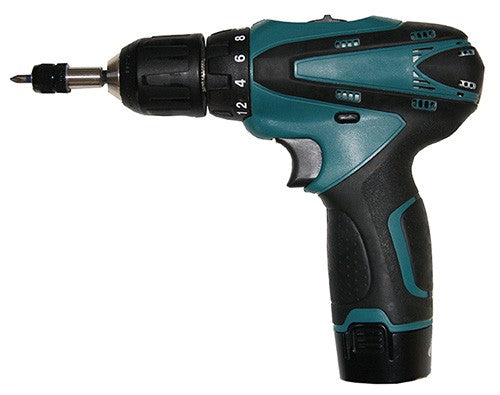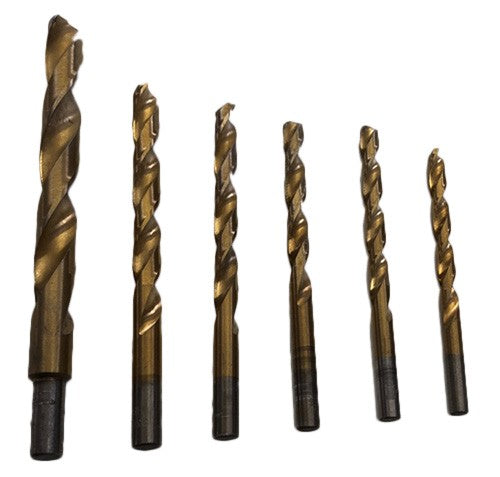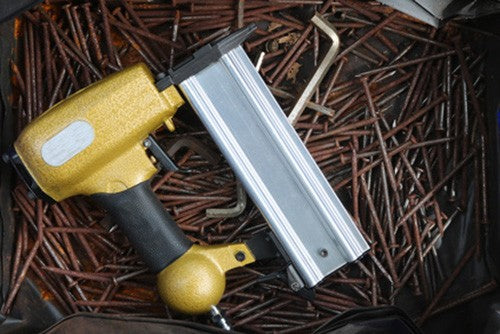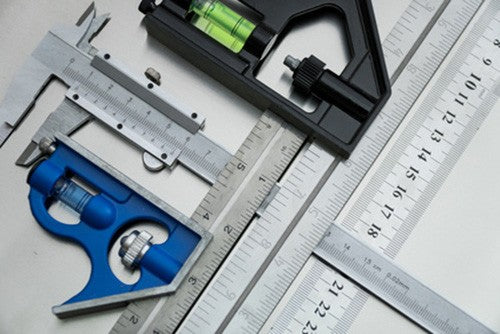Do you already have a complete DIY kit? If you are thinking about an exciting project and are looking for a rewarding creation hobby, make sure you have all the necessary tools.
Your tool selection will greatly affect the outcome of your projects. To save money while designing projects, you may consider renting tools or buying some on sale. The first tool needed is a sturdy roomy tool box. All that is left to do is filling it with musts.
1. 18-VOLT CORDLESS DRILL

A cordless drill has to be fast and powerful. It has a removable battery that needs recharging when it does not provide the intensity needed. This tool is used to drill, screw and unscrew, and may hold different bits for various jobs. A speed selector will allow you to screw (slow speed) and drill (fast speed).
An electric drill is essential for some small jobs such as hanging up a painting or more important ones such as assembling shelves or a piece of furniture.
2. MULTIPLE SCREWDRIVER

Make your task easier by choosing a multiple screwdriver with the main tips:
- flat
- Phillips (cross-shaped)
- square
You have to use the right tip for the right task. Remember to get different length handles so as to have access to what needs to be screwed or unscrewed either to insert or withdraw a tip.
3. SET OF WOOD BITS (ESSENTIAL CABINET MAKING TOOL)

There are numerous types of bits: spiral, 3-cutter tip, flat, and stretch. Spiral wood bits are used for precision drilling thanks to their fine cutting tip that drills chip out more easily. This allows you to avoid walking and wood splitting. These features make it a perfect tool for cabinet making, carpentry and doweling.
4. LEVEL

This is a precise measurement tool essential to DIY cabinet makers who want to design straight stable projects. The inner bubble in the center of the level allows you to determine whether a surface matches the angle set. So it is a must to add to your tool kit!
5. HAMMER

A wide variety of hammers is offered on the market; among these are the following:
- the carpenters hammer (to drive nails)
- the electrician hammer (to reach in narrow spaces)
- the claw hammer (to lever out nails)
The mallet is another type of hammer that is used to avoid damaging tiles while assembling them. We suggest beginning with a carpenter's hammer, firmly holding the low end of its handle.
6. SET OF FLAT BITS

It is useful for jobs that do not require a great precision. However if it is used for drilling bigger holes (6 to 35mm diameter). This carpentry tool is great for installing hinges, for carpentry work, machining or making blind holes.
7. BUILDER'S CLAMP

This very practical tool is used to firmly hold in place one or two pieces temporarily assembled while cutting, drilling, welding or drying.
This means it is used in DIY, masonry, carpentry, joinery, cabinet making, welding, construction and metalwork.
8. FINISHING NAILER

The finishing nailer -or air-powered nailer- is suited for carpentry work, for installing siding or for nailing pallets. Using low or high pressure, you can drive nails up to 100mm long. Make sure you can tell it from the air-powered stapler.
9. ELECTRIC JIGSAW

If your project is about creating a side table for the hall or the living room, a jigsaw, either electric corded or cordless, is a must in your toolbox. It will enable you to make detailed cuts: straight lines or curves. Several types of blades are offered to suit each material (wood, metal, ceramic or PVC).
10. FRAMING SQUARE

Simple and affordable, a square is useful to trace right angle cutting lines on the cut and to check whether a saw blade or a piece of furniture is at a right angle. It can also be used to measure the right lengths. A 30cm square is recommended for easy handling and precision as it can be carried along while working on your DIY projects.
11. ELECTRIC PLANER

The electric planer (or plane) is used for easy planing or grooving. Unlike its classic counterpart, it comes with a handle for convenient holding.
For example, this tool can be used to remove a layer of wood from a wood board or a beam. It can make rough surfaces into smooth ones.
12. MITER SAW

All types of miter saw can cut at precise angles. Three different types are found:
1. Sliding
2. Compound
3. Sliding compound
This will allow you to make up to four types of sections
1. Miter cuts
2. Cross cuts
3. Bevel cuts
4. Compound cuts
The miter saw is often used to make cuts in main surfaces as well as in smaller projects such as frames or flower boxes.
13. PORTABLE SAW BENCH

Photo credit DEWALT®
This multiple-use cabinet making tool is appreciated in carpentry and cabinet making projects and can be used by both professionals and amateurs. Since it is made of light material, it can be carried along easily.
It can perform, among others:
- Cross or longitudinal sections in a piece of wood;
- Angle cuts
- Grooves
- Rabbets
- Joints
14. STUD DETECTOR

Stud detectors are available in most DIY stores and allow you to hang your projects in the right place. If you know what the studs are made of, you will know what tool is needed to drill. For example, most wood screws are unable to pierce metal. Moreover, you will happen to know where are the electric switches and outlets, which are often found close to studs.
15. WOOD TREATING PRODUCTS
Although finishing oils are more a product than a tool, they are essential to cabinet makers. Once your project has been made and assembled, you will consider protecting it. Finishing oils help prevent the damage caused by various stains.
All these cabinet making tools will be useful in your projects. For further information on wood protecting tools, we suggest that you attend one of LIVOS free-of-charge training sessions.


